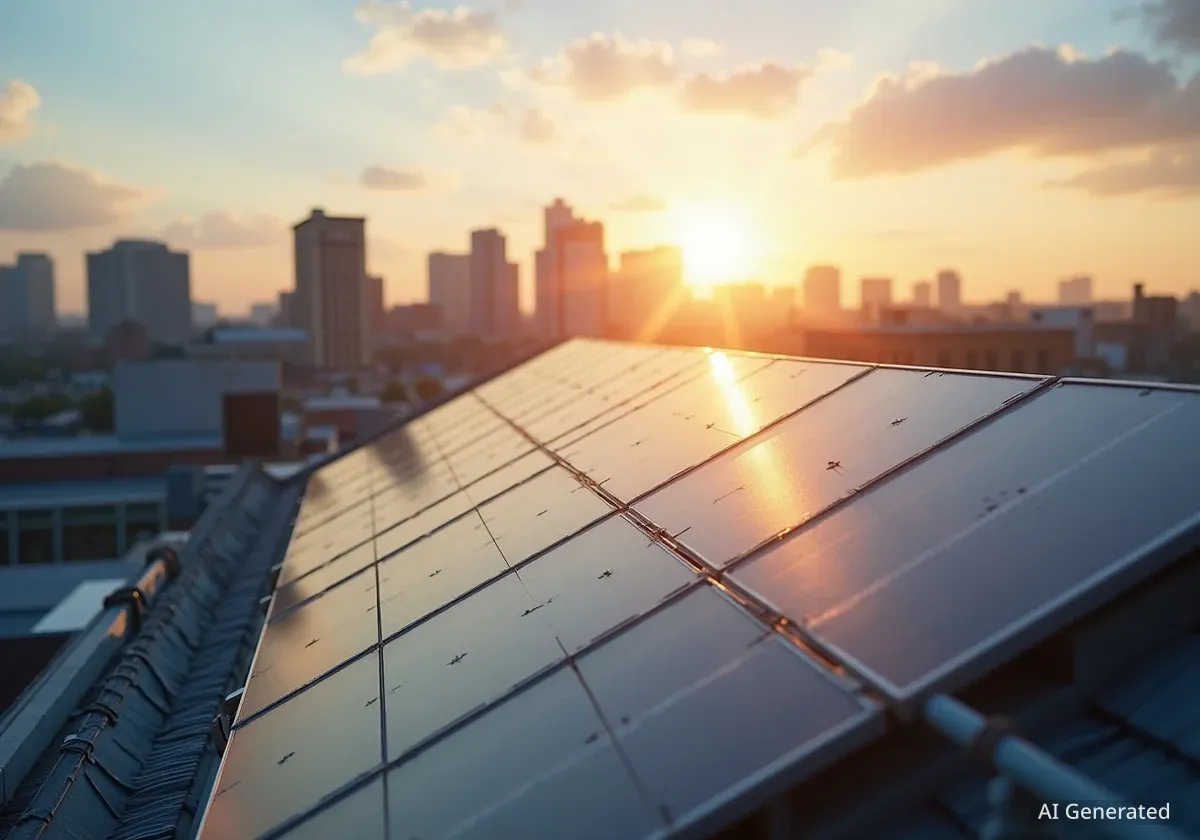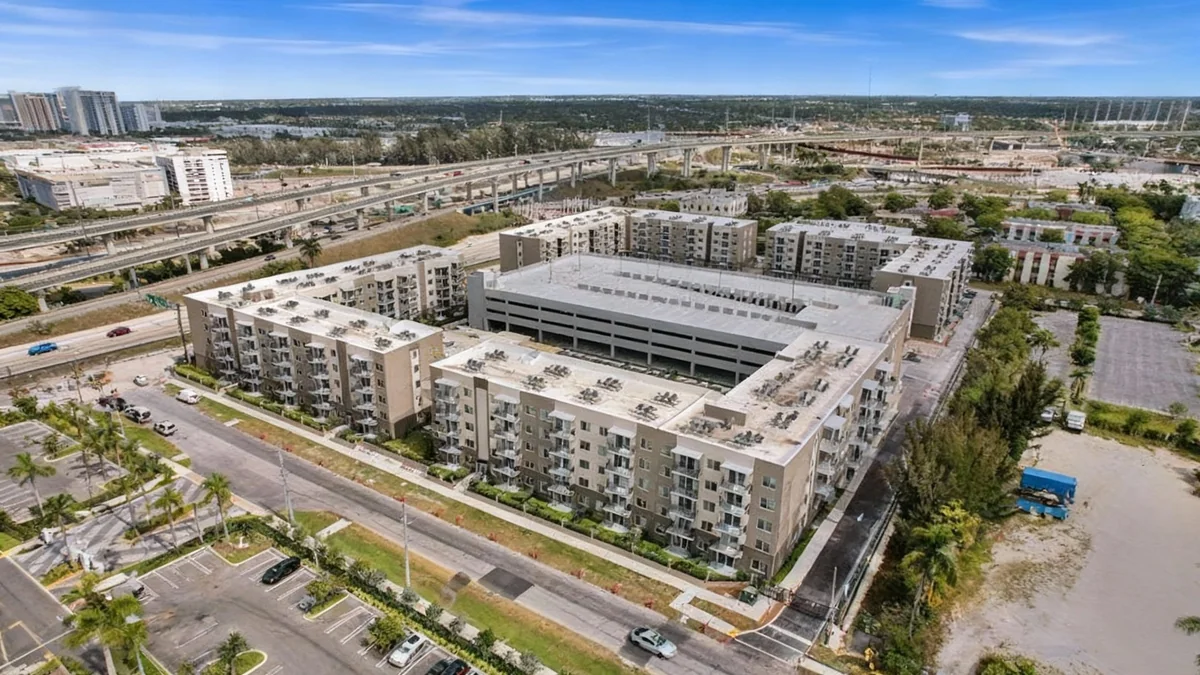Commercial property owners are facing significant financial pressure from rising vacancy rates and unpredictable operating costs. In response, many are turning to onsite solar and battery storage systems not just as environmental upgrades, but as a core financial strategy to protect income, attract tenants, and enhance asset value without requiring upfront capital investment.
Key Takeaways
- Commercial landlords are using onsite solar to create new revenue streams and reduce operating expenses amid record-high office vacancy rates.
- Financing models like Power Purchase Agreements (PPAs) and roof leases allow property owners to install solar systems with zero upfront cost.
- Offering lower energy bills through solar power has become a key amenity for attracting and retaining tenants in a competitive market.
- Advances in technology have made solar panels more efficient and over 40% cheaper in the last decade, improving the return on investment.
- New financing solutions are making solar accessible to small and mid-sized property owners who were previously excluded from the market.
A Challenging Market for Property Owners
The commercial real estate sector is currently navigating a period of significant disruption. The widespread adoption of remote and hybrid work models has fundamentally altered tenant needs and leasing agreements, leading to a surplus of available space.
According to a report from Moody’s, the national office vacancy rate reached a record 20.7% in the second quarter of 2025. This trend puts direct pressure on traditional revenue models that rely on consistent rental income.
Compounding this issue are volatile energy prices, which add another layer of financial uncertainty for landlords. As operating margins are squeezed by lower occupancy and higher expenses, property owners are actively seeking innovative ways to strengthen their financial performance.
By the Numbers
The cost of installing solar has decreased by more than 40% over the past decade, according to the Solar Energy Industries Association (SEIA). This price drop, combined with increased panel efficiency, has made solar a viable option for a wider range of commercial buildings.
Solar as a Strategic Leasing and Financial Tool
In this competitive environment, onsite solar energy systems are shifting from a long-term sustainability goal to an immediate strategic asset. By generating their own electricity, landlords can offer tenants a valuable amenity: lower and more predictable energy bills.
This benefit can be a powerful incentive to close new leases or secure renewals, especially when tenants have numerous other properties to choose from. Instead of being a capital expense, a solar installation becomes a tool for improving leasing dynamics and strengthening tenant relationships.
Furthermore, this strategy positions landlords as forward-thinking and environmentally responsible, which aligns with the growing number of tenants who have their own Environmental, Social, and Governance (ESG) targets.
Technology and Resilience Drive Value
The financial case for solar has been strengthened by significant technological advancements. Modern solar panels are not only more affordable but also far more efficient, capable of producing more power from the same amount of roof space. This makes installations practical even for buildings in dense urban areas or those with smaller rooftops.
The Role of Battery Storage
The addition of battery storage systems adds another critical layer of value: energy resilience. These batteries store excess solar energy generated during the day for use at night or, more importantly, during power outages. For tenants in sectors like technology, healthcare, or logistics, where uninterrupted power is essential, this resilience is a major selling point.
In an era of increasing grid instability and severe weather events, the ability to guarantee continuous power can be the deciding factor for a tenant choosing where to locate their business. This combination of solar and storage provides a compelling reason for businesses to remain and expand within a property.
Financing Models Eliminate Upfront Costs
While the benefits are clear, the initial cost of a solar installation remains a significant barrier for many landlords. To address this, third-party financing models have become popular, allowing property owners to adopt solar without any capital outlay. Two primary models dominate the market: the Power Purchase Agreement (PPA) and the roof lease.
Power Purchase Agreements (PPAs)
In a PPA, a third-party company installs, owns, and maintains the solar system on the landlord's property. The property owner then agrees to buy the electricity produced by the system at a predetermined, fixed rate.
This rate is typically about 20% lower than standard utility prices, providing immediate and predictable savings on energy costs. The landlord avoids the cost and responsibility of owning the system, while instantly lowering the building's operating expenses and improving its net operating income.
Roof Lease Agreements
Another option, the roof lease, is ideal for landlords with large, underutilized rooftops. In this arrangement, the property owner leases their roof space to a solar developer. The developer installs and operates the solar system, selling the generated power directly to the grid or another third party.
In return, the landlord receives a steady stream of passive income from the lease payments. This model requires no tenant involvement and creates a new revenue source from a previously non-performing asset.
Making Solar Accessible to More Landlords
Historically, financing for commercial solar projects has favored large, utility-scale developments or property owners with exceptional credit ratings. This has left many small and mid-sized commercial landlords unable to access the benefits of these innovative financing models.
"New solutions are emerging specifically designed to meet the needs of smaller operators," notes Claire Broido Johnson, co-founder of Sunrock Distributed Generation. Her company works with a large network of installers to offer flexible financing that opens the door for a broader range of property owners.
This shift is democratizing access to solar energy, allowing operators of all sizes to leverage it as a competitive advantage. By partnering with experienced providers that offer these flexible solutions, smaller landlords can overcome the financial hurdles that once kept solar out of reach.
As the commercial real estate market continues to evolve, onsite solar offers a rare opportunity to reduce costs, increase tenant satisfaction, and improve property values simultaneously. For landlords seeking to thrive in a challenging market, adopting a solar strategy is becoming an essential move.





